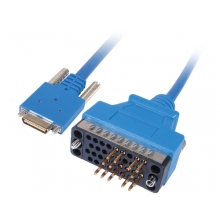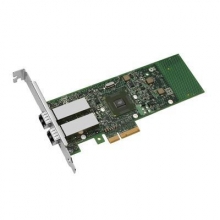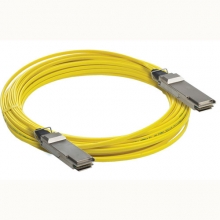- Optical Transceivers
- SFP+ Transceivers
- XENPAK Transceivers
- XFP Transceivers
- X2 Transceivers
- SFP Transceivers
- Compatible SFP
- 3Com SFP
- Alcatel-Lucent SFP
- Allied Telesis SFP
- Avaya SFP
- Brocade SFP
- Cisco SFP
- D-Link SFP
- Dell SFP
- Enterasys SFP
- Extreme SFP
- Force10 SFP
- Foundry SFP
- H3C SFP
- HP SFP
- Huawei SFP
- Intel SFP
- Juniper SFP
- Linksys SFP
- Marconi SFP
- McAfee SFP
- Netgear SFP
- Nortel SFP
- Planet SFP
- Q-logic SFP
- Redback SFP
- SMC SFP
- SUN SFP
- TRENDnet SFP
- ZYXEL SFP
- Other SFP
- FE SFP
- GE SFP
- OC3 SFP
- OC12 SFP
- OC48 SFP
- Copper SFP
- CWDM SFP
- DWDM SFP
- BIDI SFP
- Fiber Channel SFP
- Multi-Rate SFP
- SGMII SFP
- Compatible SFP
- GBIC Transceivers
- Passive Components
- Networking
- Cables
- Equipments
- Tools
- Special Offers


Closing the Technology Gap
The recently launched West African Cable System (WACS) is expected to address improved access to telecommunication services, data speeds and connectivity, ushering in a new dawn in Africa’s quest to bridge its technological hiatus.
Countries such as Namibia, Togo and the DRC are set to immediately benefit from WACS, a 14 500-kilometre optic-fibre submarine cable whose ultimate aim is to link Southern and West Africa with Europe.
WACS’ landing stations are in Namibia, Angola, the DRC, Republic of Congo, Cameroon, Nigeria, Togo, Ghana, Cote d’Ivoire, Cape Verde, Canary Islands, Portugal and the United Kingdom.
The international submarine cable’s connectivity is between the various landing stations and a London-based point of presence (PoP).
WACs is a private investor-led initiative and its consortium comprises Neotel, MTN, Vodacom, Telkom SA and telecommunications firms from the companies where landing points are situated.
There is reason to believe Africa is closing the technology gap with the rest of the world.
Already launched are the East African Sub-marine Cable System (EASSy), in which 16 African countries hold 92 percent interest with the remaining shareholding split among various telecommunications operators and services.
There are also the East Africa Marine Systems (TEAMS) owned by Kenya public-private consortiums, and the Seacom cable.
With WACS, together with EASSy, TEAMS and other initiatives, analysts say that a high-capacity ring between Africa and Europe has now been formed.
EASSy and TEAMS are said to have partially contributed to 50 percent lower broadband costs in East Africa and technology analysts say that lower costs could mean an improved e-commerce, e-learning, m-banking and m-health.
The connectivity between continents means higher speeds for downloading and improved capacity.
Namibia’s largest mobile operator, MTC is already rolling out 4G technology. The firm says that it has laid a groundwork fibre ring to connect its base stations and the operational backbone.
“MTC’s involvement in the WACS is a long-term investment of US$15 million in the WACS and another US$10 million in the national fibres that will secure long-term capacity for the country.
“The investment is especially critical in view of MTC’s 4G and that MTC is looking forward to transforming and taking full benefit of WACS and translating it into technology that will improve people’s lives,” Miguel Geraldes, the MD of MTC, said recently.
Broadband costs across Africa are exorbitantly high and analysts say this is because of residual reliance on satellite communications and microwave networks.
The cost of a fixed broadband sub-basket in Africa in 2010 was said to be around 291 percent of gross national income (GNI), compared to a developing world average of 112 percent in the Asia-Pacific region and two percent in Europe.
In the Central African Republic (CAR), the cost for fixed-line broadband is said to be 40-times more expensive than the average monthly income of the population.
Analysts say that Africa offers a depth of commercial opportunities, which is inspiring foreign investment, fostering increasing competition and allowing opportunities to lower costs to the end user.
But the benefits for the technological advancements could still be a long time coming for millions of Africans still trapped in poverty. Moreover, challenges still remain around terrestrial connectivity, competition in respective markets and wholesale pricing and consumer access, analysts say.
There is already evidence of this in the DRC, for example, where lack of technical know-how is already stalling progress on fibre-optic connectivity.
“Optimism in the ability of information and communication technology (ICT) to raise productivity and growth should not disguise the substantial impediments which remain,” analysts at Standard Bank research said last year.
Intra-African backhaul networks are essential in order to distribute the advantages of the new cables and maximise their anticipated economic gains, the analysts said.
Currently, 88 percent of Africa’s terrestrial backbone infrastructure is wireless with the remaining 12 percent comprising fibre-optic cable.
For mobile technologies, 99 percent of the total infrastructure is wireless while fixed operators have 60 percent wireless and 40 percent fibre infrastructure.
“In the absence of substantial investments in elevating current intra-regional linkages for large areas, and in particular landlocked countries, broadband costs will remain excessively high,” analysts say.
“While new cables are likely to drastically alter the cost and speed of broadband connections, the majority of Africans will remain locked out of these improvements should supportive backhaul networks not be created.
“Too many markets remain inadequately liberalised for the gains of telecommunications to effectively percolate throughout the economy.
“Quite clear, those countries adopting pragmatic and investor-friendly policies in the ICT space will gain an edge in unlocking the potentially profound gains ICT is able to generate.”



















































